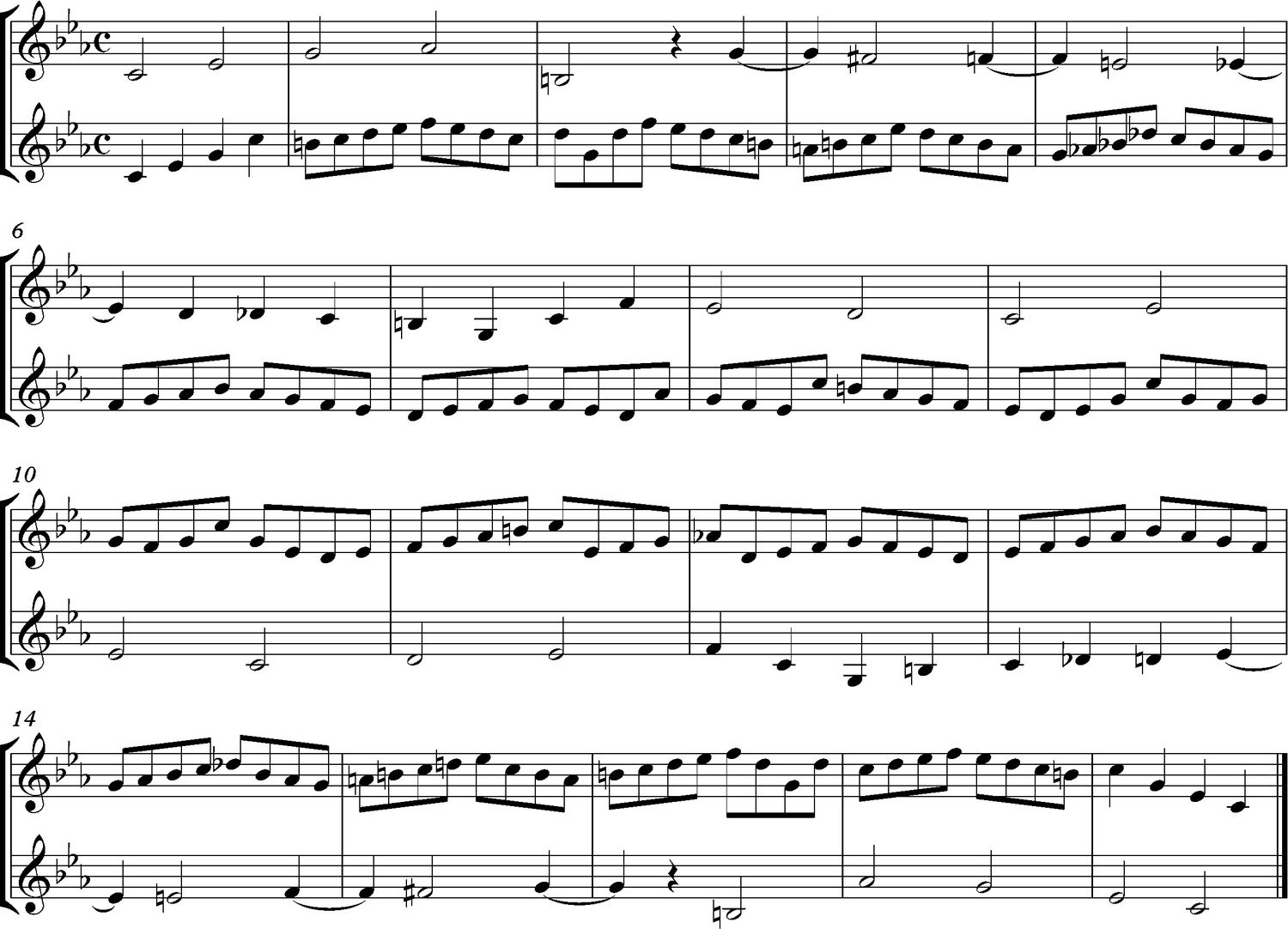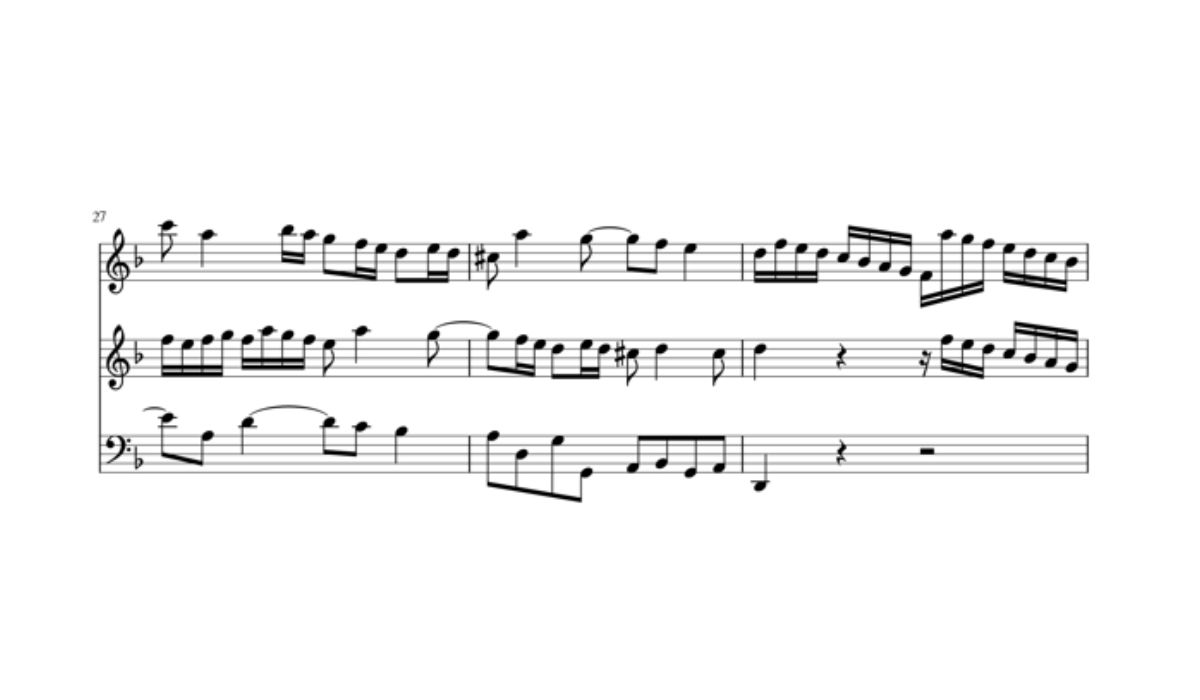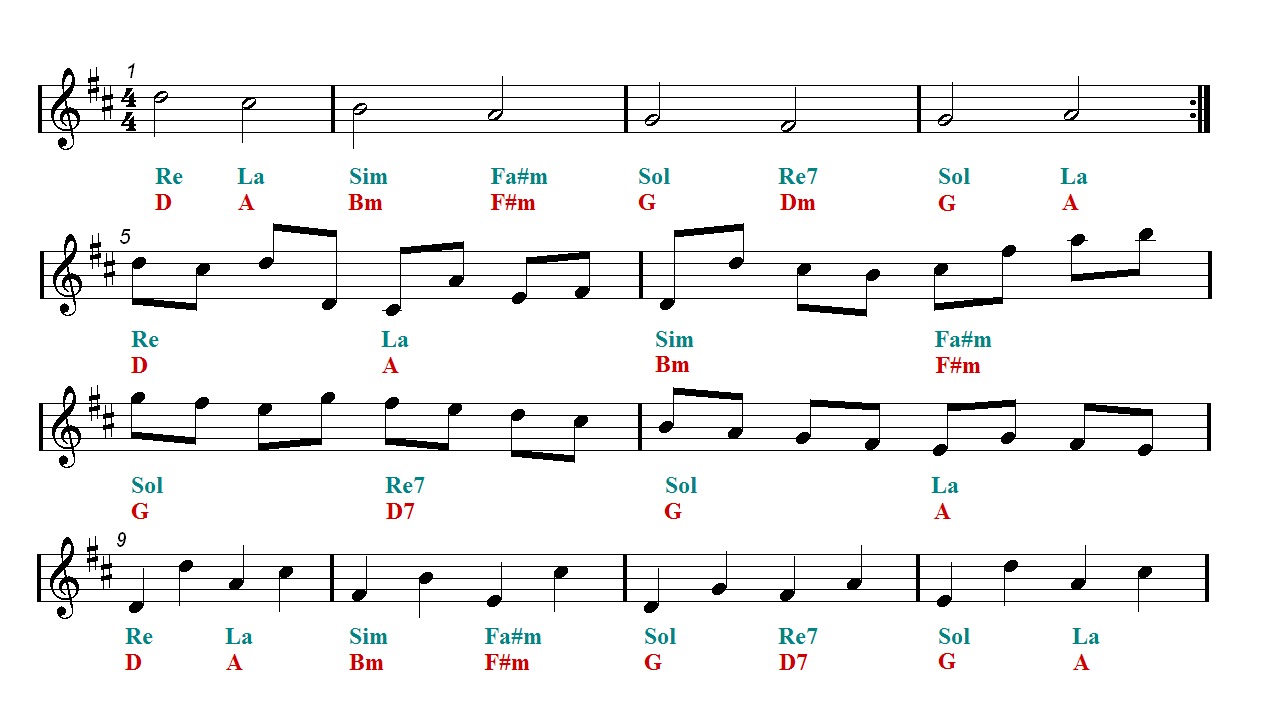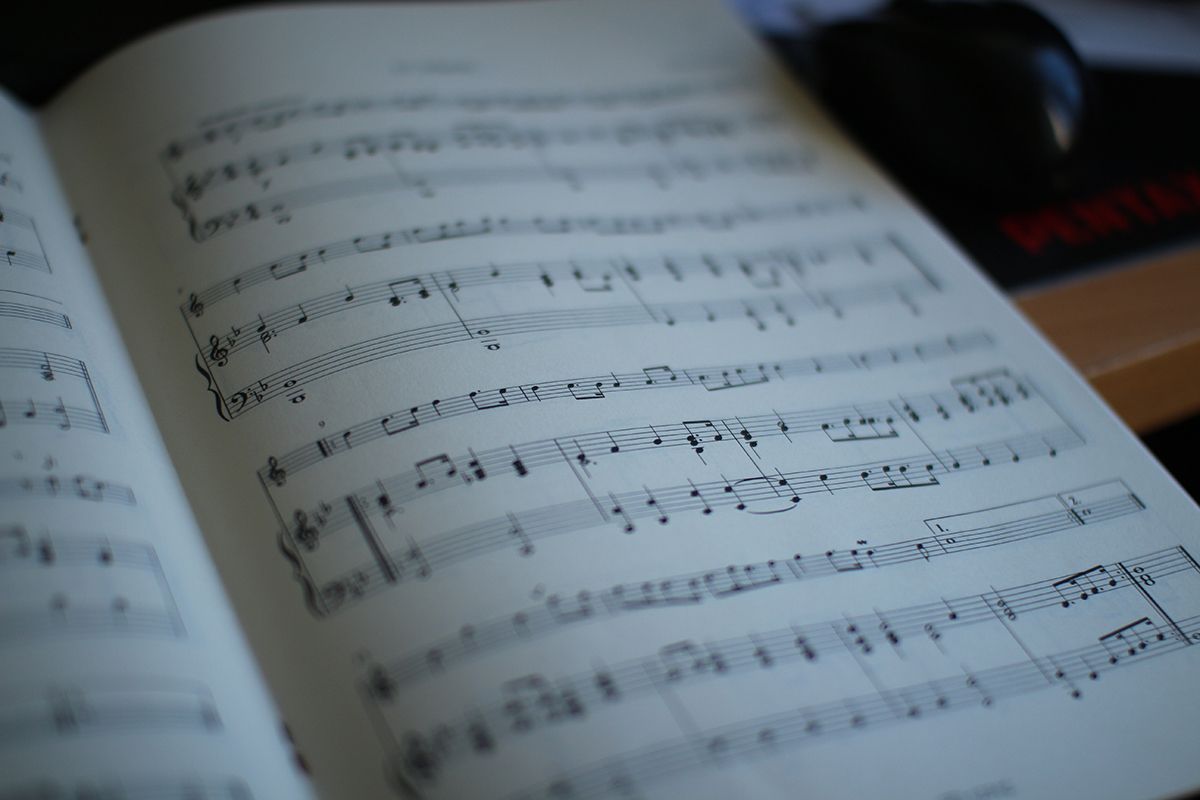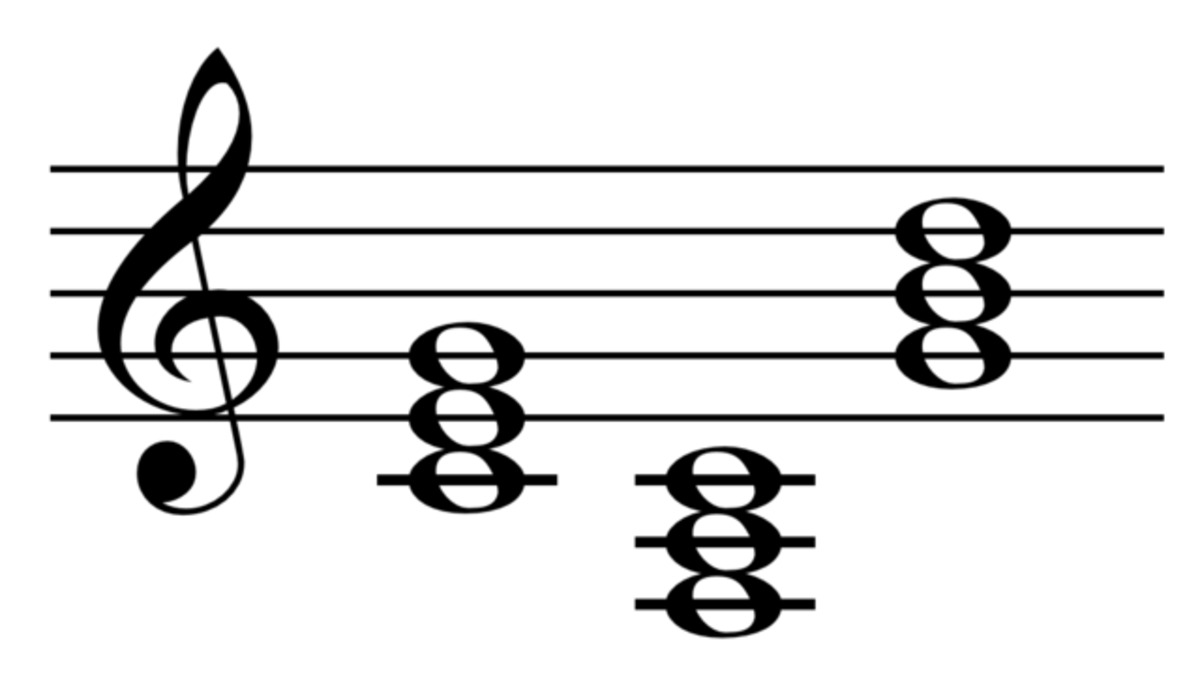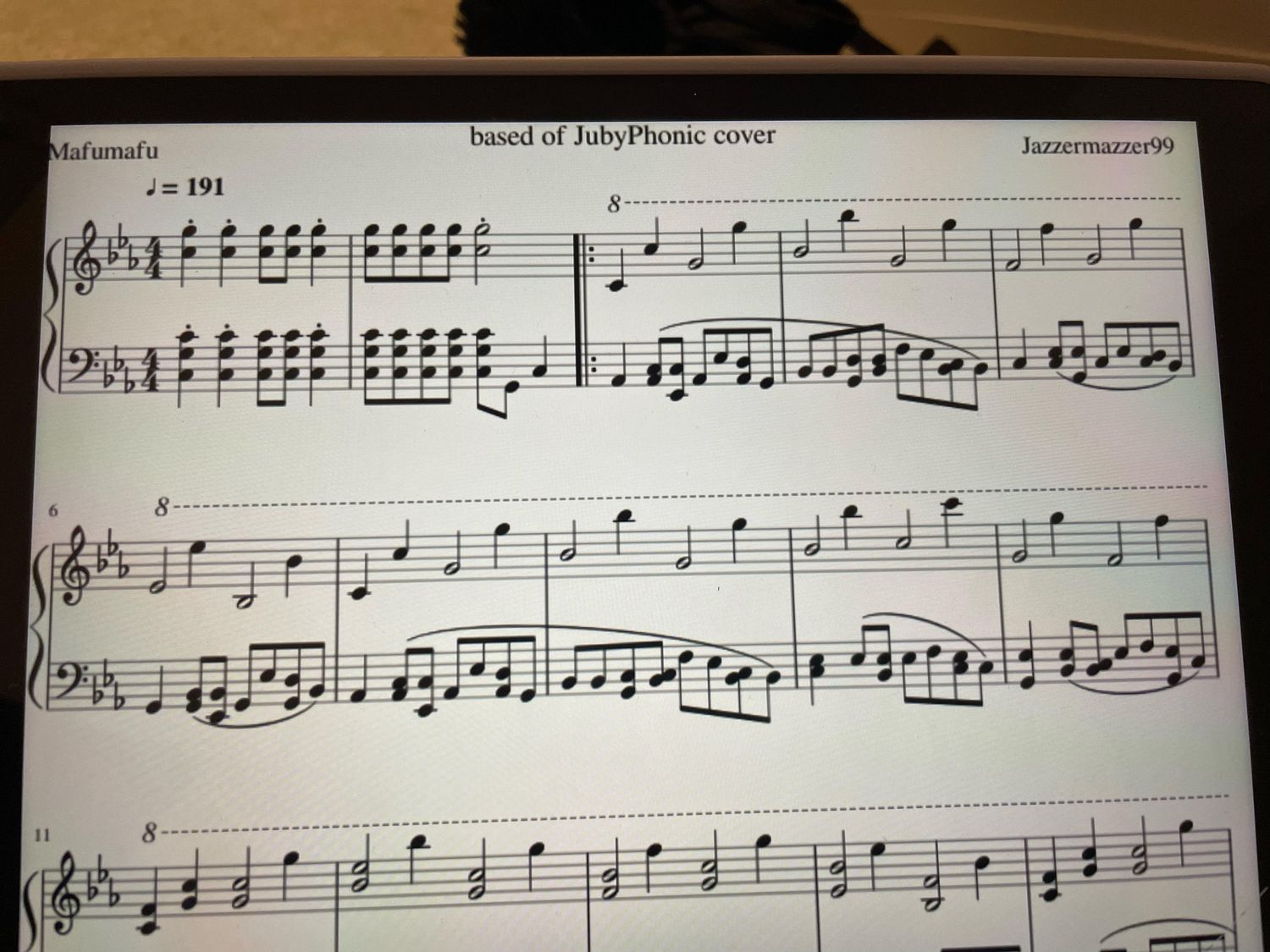Home>Production & Technology>Music Theory>What Is Modal Mixture In Music Theory
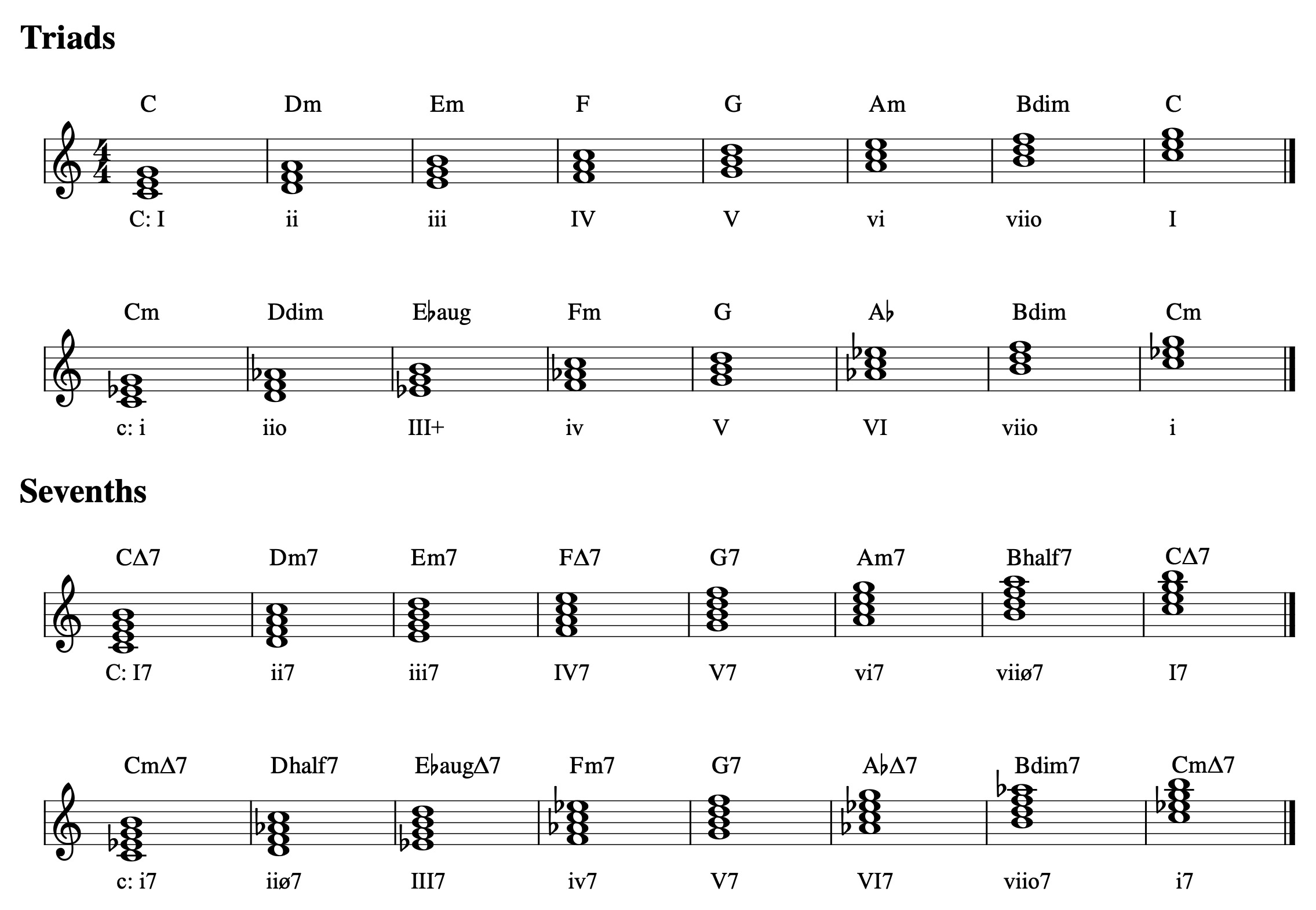

Music Theory
What Is Modal Mixture In Music Theory
Published: January 31, 2024
Learn about modal mixture in music theory and how it adds depth and complexity to compositions. Explore the concept and its impact on harmonic progression and emotional expression in music.
(Many of the links in this article redirect to a specific reviewed product. Your purchase of these products through affiliate links helps to generate commission for AudioLover.com, at no extra cost. Learn more)
Table of Contents
Introduction
Welcome to the fascinating world of music theory! As a musician, composer, or music enthusiast, you may have encountered the term “modal mixture” in your studies or discussions. Modal mixture is an advanced concept in music theory that adds a touch of complexity and intrigue to musical compositions.
Modal mixture, also known as modal borrowing or modal interchange, refers to the borrowing of chords or notes from a different tonal center or mode. It involves incorporating elements from parallel or related modes into a composition, creating a unique harmonic color and adding depth to the musical expression.
Exploring modal mixture allows composers to break away from the traditional constraints of a single mode or tonal center, expanding their creative palette and offering listeners a fresh and engaging listening experience. It adds a sense of tension, surprise, and departure from the established tonal framework, giving compositions a distinctive character and emotional depth.
Although modal mixture may seem complex, it is a concept deeply rooted in the long and rich history of music. It has been used by composers from various musical eras, ranging from classical to jazz, and is a prominent feature in many contemporary genres.
In this article, we will delve into the world of modal mixture, exploring its definition, historical context, how it works, and its practical application in analyzing and creating music. Whether you are a music student, a composer, or simply curious about the inner workings of music, this article will provide you with a solid foundation to understand and appreciate the concept of modal mixture.
Definition of Modal Mixture
Modal mixture, also known as modal borrowing or modal interchange, is a harmonic technique in music theory that involves borrowing chords or notes from a different tonal center or mode. It introduces elements from parallel or related modes, adding a unique flavor to the composition.
In traditional Western music theory, modal mixture predominantly occurs within the major and minor scales. It allows composers to freely blend chords and melodic elements from different modes, creating unexpected harmonic progressions and subtle shifts in tonality.
Modal mixture can be thought of as a way to temporarily alter the established tonal center and inject new tonalities into a composition. By borrowing chords or notes from a different mode, composers can add tension, color, and emotional depth to their music.
For example, in a composition written in the key of C major, a composer may introduce a chord or melodic element borrowed from the parallel minor key of C minor. This can create a momentary shift in tonality and evoke a different emotional response from the listener.
Modal mixture can also involve borrowing chords or notes from modes that are related to the established tonal center. For instance, a composition in C major may incorporate chords or melodic elements from the modes of Dorian or Mixolydian, which share some similarities with the C major scale.
One of the key distinctions of modal mixture is that it involves borrowing harmonic elements rather than completely modulating or changing the key of the composition. It adds a subtle twist to the harmonic progression while maintaining a sense of connection to the original tonal center.
Overall, modal mixture provides composers with a powerful tool for expanding the harmonic palette and adding complexity and depth to their compositions. It allows for creative exploration and can result in dynamic and intriguing musical passages.
Historical Context
The concept of modal mixture has a rich history in music, spanning across various cultures and musical eras. It can be traced back to the early development of Western music, where different modes played a significant role in shaping the tonal landscape.
In the medieval and Renaissance periods, major and minor scales as we know them today were not the primary tonal systems. Instead, different modes, such as Ionian, Dorian, Phrygian, Lydian, Mixolydian, Aeolian, and Locrian, were prevalent.
During the Renaissance, composers like Giovanni Palestrina and Orlando di Lasso began experimenting with borrowing chords and melodic elements from different modes. These early instances of modal mixture laid the foundation for the future development of this harmonic technique.
As music evolved into the Baroque period, modal mixture became more prominent. Composers, including J.S. Bach and Domenico Scarlatti, employed modal mixture to create contrast and heightened emotional expression in their compositions. It allowed them to venture beyond the traditional tonal boundaries and explore various tonalities within a piece of music.
In the Romantic era, composers further expanded their harmonic language, utilizing modal mixture in their compositions. Prominent composers such as Chopin, Tchaikovsky, and Wagner embraced modal mixture to evoke different moods and intensify the emotional impact of their music.
Modal mixture continued to evolve in the 20th century, with composers like Debussy, Ravel, and Stravinsky incorporating elements from different modes into their compositions. These innovative approaches to harmony challenged traditional tonal practices and opened the doors to new possibilities in music composition.
Today, modal mixture is a common technique used in various genres, including jazz, pop, and film music. Jazz musicians, in particular, experiment extensively with modal interchange, creating rich and complex harmonic progressions that push the boundaries of tonality.
The historical context of modal mixture demonstrates its enduring relevance and adaptability. It has evolved from its ancient roots in modal music to become a versatile and expressive tool used by composers across different musical styles and periods.
How Modal Mixture Works
Modal mixture works by incorporating chords or melodic elements from a different mode into a composition, creating a temporary shift in tonality and adding a unique flavor to the music. It allows composers to explore new tonalities and create interesting harmonic progressions.
When using modal mixture, composers typically borrow chords from the parallel mode or a related mode. The parallel mode refers to a mode that shares the same tonic note but has a different set of intervals compared to the original mode. For example, in the key of C major, the parallel mode would be C minor.
Composers can also borrow chords from related modes that share some similarities with the original mode. For instance, in the key of C major, a composer may borrow chords from the modes of Dorian or Mixolydian, which have subtle differences in their intervals but still maintain a connection to the C major scale.
Modal mixture can be achieved by substituting chords within a harmonic progression. For example, in a composition in the key of C major, a typical progression may involve the chords C, F, and G. However, by borrowing a chord from the parallel minor mode, such as Cm, the harmonic progression takes on a different tonality and emotional quality.
Furthermore, modal mixture can also involve borrowing melodic elements, such as individual notes or melodic patterns, from a different mode. These borrowed elements can be seamlessly integrated into the composition to create melodic tension and add depth to the overall musical expression.
The use of modal mixture allows composers to create moments of contrast and surprise within a composition. By introducing chords or melodic elements from a different mode, they can momentarily lift the music from its established tonal center, generating tension and capturing the listener’s attention.
Modal mixture is not limited to specific musical genres or time periods. It is a versatile technique used in various styles of music, including classical, jazz, pop, and film music. Composers use modal mixture to evoke specific emotions, add complexity to their compositions, and break away from predictable harmonic progressions.
Understanding how modal mixture works opens up a world of creative possibilities for composers. It allows them to experiment with different tonalities, create unique and memorable harmonic progressions, and ultimately craft music that is engaging, expressive, and emotionally impactful.
Common Examples of Modal Mixture
Modal mixture can be found in a wide range of musical compositions, spanning various genres and musical styles. Here are some common examples of modal mixture in action:
- Borrowing from the parallel minor mode: One prevalent example of modal mixture is borrowing chords or notes from the parallel minor mode in a major key composition. This technique adds a touch of melancholy and intensity to the music. For instance, in a song in C major, incorporating chords like Cm, Fm, or Gm from the parallel C minor mode creates a temporary shift in tonality and adds emotional depth.
- Modal mixture in jazz: Modal mixture is commonly employed in jazz to create rich and complex harmonic progressions. Jazz musicians often borrow chords and melodic elements from different modes to bring fresh tonal colors to their improvisations and compositions. For example, using the Dorian mode in a composition based on a major scale can create a modal mixture.
- Neapolitan chord: The Neapolitan chord is a specific example of modal mixture that involves borrowing a chord from the parallel Phrygian mode in major key compositions. It is typically a major chord built on the lowered second scale degree. The use of the Neapolitan chord adds a sense of tension and can create a dramatic effect. It is often followed by a resolution, leading to a distinctive harmonic progression.
- Secondary dominant chords: Secondary dominants are another instance of modal mixture commonly used in many musical genres. These chords borrow from outside the key to create temporary tension and lead to a new tonal center. For example, in the key of C major, introducing a dominant chord based on the fifth degree of G major (D7) leads to a temporary shift to the key of G major before resolving back to C major.
- Mixing modes within a composition: Modal mixture also involves mixing modes within a composition, blending the characteristics of different tonalities. For instance, a composer may use chords from the Dorian mode in one section and chords from the Mixolydian mode in another section, creating an intriguing contrast and variety within the overall composition.
These examples demonstrate the versatility and creative potential of modal mixture. By borrowing chords and melodic elements from different modes, composers can create harmonic richness, tension, and emotional depth in their compositions across various musical genres.
Understanding Tonal Centricity in Modal Mixture
Tonal centricity is a vital aspect to consider when exploring modal mixture in music theory. It refers to the sense of a tonal center or a hierarchy of pitches within a musical composition. Modal mixture can affect tonal centricity by introducing new tonalities and temporarily shifting the focus away from the established tonal center.
When employing modal mixture, it is essential to understand how the borrowed chords or melodic elements relate to the overall tonal framework. Some borrowed elements may create a strong sense of tonal centricity, while others may introduce ambiguity and tonal instability.
In certain instances, modal mixture can function subtly, adding color and complexity within the existing tonal center. For example, borrowing chords from the parallel or related modes that share a strong harmonic relationship with the original key can maintain a clear sense of tonal centricity. This allows the composition to retain a cohesive tonal structure while incorporating new tonal colors.
On the other hand, modal mixture can also create moments of tonal ambiguity by introducing chords or melodic elements that challenge the established tonal center. This can result in a temporary sense of tonal instability and tension. Composers often utilize these moments strategically to evoke specific emotional responses from the listeners.
Understanding tonal centricity in modal mixture involves being aware of the desired effect and the impact it has on the overall musical narrative. It requires careful attention to how the borrowed elements interact with the rest of the composition and how they contribute to the overall tonal journey.
Modal mixture can also influence the overall tonal structure by introducing variations in the harmonic progression and melodic contour. These variations can create a sense of contrast and progression, leading the listener through different tonal territories within a composition.
Ultimately, the mastery of tonal centricity in modal mixture lies in striking a balance between introducing new tonalities and maintaining a sense of coherence within the musical work. It’s about utilizing borrowed elements to enhance the emotional impact, create tension and release, and guide the listener on a captivating tonal journey.
By understanding tonal centricity and utilizing modal mixture effectively, composers can add depth, complexity, and emotional richness to their music, captivating the listener with a dynamic interplay of various tonalities.
Analyzing Modal Mixtures in Music
When analyzing modal mixtures in music, there are several key elements to consider, including harmony, melody, and tonal relationships. By dissecting these components, we can gain insight into how modal mixtures function within a composition.
Harmony: The harmonic progression is a primary indicator of modal mixtures. Look for chords that deviate from the established tonal center or include chords borrowed from a different mode. Note any unusual chord progressions or unexpected harmonic choices. Analyzing the chord progression can reveal the use of modal mixture and provide insight into the tonal shifts and contrasts within the composition.
Melody: Examine the melodic lines and identify any deviations from the established key. Look for the use of borrowed notes or patterns from different modes. These melodic choices can add color and tension to the composition. Analyzing the melody can help identify the specific modes or tonalities that are being mixed, revealing the composer’s creative intentions.
Tonal Relationships: Modal mixtures create temporary shifts in tonal center and alter the tonal relationships within a composition. Look for moments where the tonal center seems to temporarily change or where new tonalities are introduced. Pay attention to the resolution of these shifts and observe how they contribute to the overall emotional arc of the piece. Analyzing the tonal relationships can help understand the impact of modal mixture on the composition’s structure and narrative.
When analyzing modal mixtures, it is crucial to consider the context in which they occur. Look for patterns or recurring instances of modal mixture throughout the composition. Consider the impact of these mixtures on the overall character and emotional expression of the piece.
Additionally, understanding the composer’s artistic intention and the historical and cultural context of the composition can provide valuable insights into the use of modal mixture. Some composers may use modal mixture to evoke specific emotions or to challenge traditional tonal conventions, while others may incorporate it as a stylistic element specific to a particular musical genre or era.
Overall, analyzing modal mixtures involves closely examining the harmonic, melodic, and tonal aspects of a composition to unlock its hidden layers. By doing so, we can gain a deeper appreciation for the creative choices made by the composer and understand how modal mixture contributes to the overall musical experience.
Techniques for Creating Modal Mixtures
Creating modal mixtures in music allows composers to add complexity, tension, and unique tonal colors to their compositions. Here are some techniques that composers often utilize to create compelling modal mixtures:
- Borrowing from parallel modes: One common technique is borrowing chords or melodic elements from the parallel mode. For example, in a composition in C major, borrowing chords from C minor can introduce a contrasting tonality and evoke a different emotional response. Similarly, borrowing from parallel modes in minor keys can add depth and variety to the composition.
- Borrowing from related modes: Composers can also borrow chords or melodic elements from modes related to the established tonal center. For instance, in a major key composition, borrowing chords from the Dorian or Mixolydian modes can introduce new tonalities while still maintaining a connection to the original tonal center.
- Exploring the use of chromaticism: Modal mixtures can be achieved by incorporating chromatic notes or chords into the composition. Chromaticism involves using notes outside the established key or mode, creating a sense of tension and color. By strategically introducing chromatic elements, composers can create unexpected harmonic twists and intensify the emotional impact of their music.
- Utilizing secondary dominants: Another technique for creating modal mixtures is the use of secondary dominants. By introducing dominant chords that temporarily resolve to a chord outside the original key, composers can create subtle tonal shifts and add harmonic richness. This technique adds harmonic tension to a composition before resolving back to the original tonal center.
- Experimenting with modal interchange: Modal interchange involves directly borrowing chords from different modes and integrating them into a composition. For example, incorporating chords from the Mixolydian mode in a major key composition or using chords from the Aeolian mode in a major key composition can create modal mixtures that deviate from the expected tonal framework.
- Emphasizing modal melodies: Creating modal mixtures can also be accomplished by crafting melodies that emphasize the characteristics of a specific mode. Composers can construct melodic lines that incorporate characteristic scale degrees or emphasize unique intervals found in the desired mode. This technique can enhance the modal flavor and contribute to the overall sense of tonal contrast.
These techniques serve as starting points for composers to explore and experiment with modal mixtures. By understanding the principles behind each technique and their impact on the overall composition, composers can utilize modal mixtures to enhance their creative expression, add depth to their music, and captivate listeners with unexpected tonal journeys.
Conclusion
Modal mixture is a fascinating and powerful concept in music theory that allows composers to experiment with tonal colors, create tension and release, and add depth and complexity to their compositions. By borrowing chords or melodic elements from different modes, composers can introduce new tonalities, temporarily shift the tonal center, and evoke a range of emotions.
Throughout history, modal mixture has played a significant role in various musical genres and periods. From the Renaissance to the present day, composers have utilized modal mixture to break away from traditional tonal conventions, explore new harmonic territories, and create captivating musical journeys for listeners.
Understanding modal mixture involves analyzing the harmony, melody, and tonal relationships within a composition. By observing chord progressions, melodic choices, and shifts in tonal center, we can recognize the use of modal mixtures and gain insight into their impact on the overall musical structure and narrative.
Techniques for creating modal mixtures include borrowing from parallel or related modes, utilizing chromaticism, incorporating secondary dominants, exploring modal interchange, and emphasizing modal melodies. These techniques provide composers with a toolkit to experiment with different tonalities, create contrasts, and express their unique musical voice.
Modal mixture offers composers endless possibilities for creativity and self-expression. It allows them to stray beyond the confines of a single mode or tonal center, adding richness, tension, and intrigue to their compositions. By skillfully incorporating modal mixtures into their music, composers can captivate listeners, evoke powerful emotions, and create memorable musical experiences.
Whether you are a composer, musician, or music enthusiast, embracing the world of modal mixture opens up a world of harmonic exploration and creativity. It invites you to challenge traditional tonal boundaries, discover new tonal colors, and embark on a musical journey filled with surprises and expressive possibilities.


